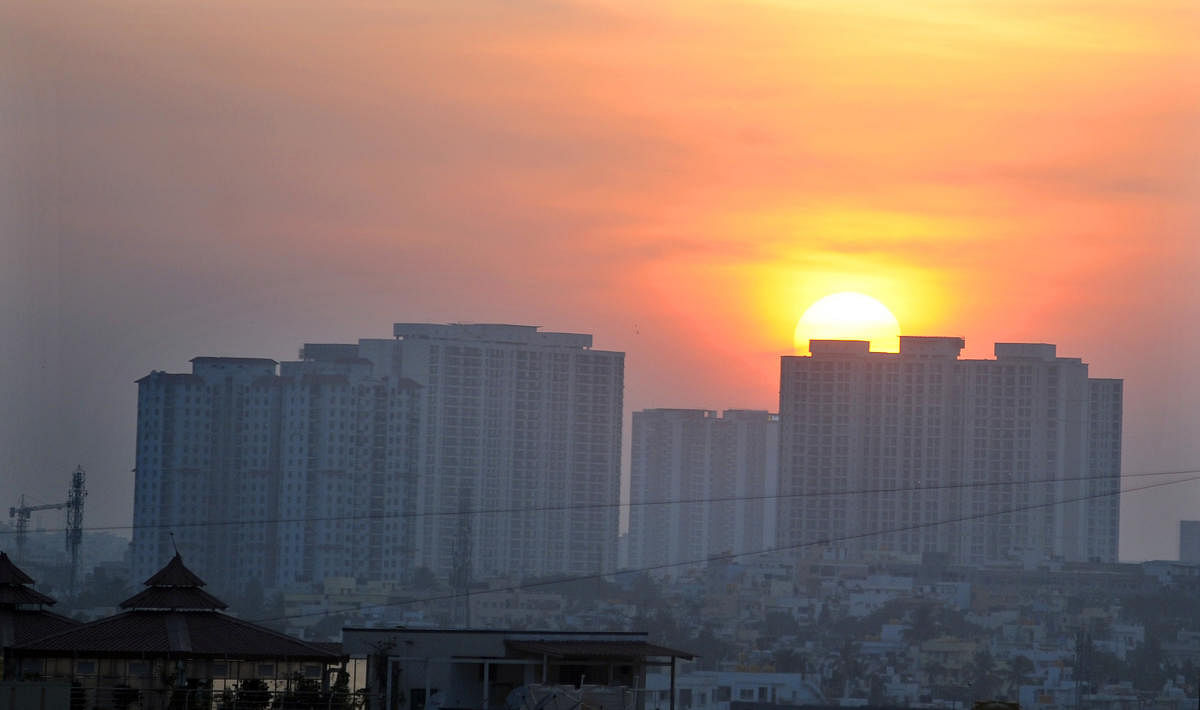
More than half of 1,816 housing projects launched last year across seven big cities were high-rises, while share of villas declined to an all-time low at 2 per cent, according to property consultant Anarock.
"With Indian cities under increasing pressure to grow vertically, the share of high-rises (G+20 floors or more) scaled unprecedented heights in 2019," Anarock Chairman Anuj Puri said.
Of total 1,816 projects launched in 2019 across seven major cities, more than 52 per cent were of G+20 floors or more. Total supply share of villas declines to all-time low of 2 per cent in 2019 against 5 per cent in 2014.
Anarock, which is primarily into brokerage business in residential property market, tracks property markets of seven cities -- national capital region (Delhi-NCR), Mumbai Metropolitan Region (MMR), Kolkata, Chennai, Bengaluru, Hyderabad and Pune.
According to the data, land-scarce MMR tops the list with over 75 per cent of the total 734 projects launched in 2019 in the high-rise category.
"With G+20 floors the new normal in the region, Mumbai is closing in on other mega cities like New York, Hong Kong and Tokyo where buildings as tall as G+50 floors are the norm," the report said.
The Delhi-NCR market came next with nearly 70 per cent of its total launched projects in the high-rise category.
In Hyderabad, Kolkata and Chennai, the share of G+20 floors or above option is scantier, with their high-rise share at 23 per cent, 21 per cent and 16 per cent respectively, it added.
"Notably, Chennai and Hyderabad - two cities which had stuck to more conventional low-rise formats for long – are gradually warming up to high-rise housing developments. In both these cities, the well-to-do preferred bungalows and sea-facing villas. It is only in the last decade that these cities have begun to grow vertically, largely due to accommodate increased inward migration," the consultant said.
On villas, Anarock said that out of the total new launches of 5.45 lakh units in 2014, nearly 5 per cent were villas. In 2019, this share dropped to 2 per cent of the total of 2.37 lakh units launched during the year.
"The increasing trend of vertical development has taken the sheen off a once highly-preferred property type - villas. Both demand and supply of this format are diminishing, with wealthy homebuyers preferring the latter-day concept of ‘sky villas’," Anarock said.
Share of new supply of villas in Hyderabad dropped to 8 per cent last year from over 35 per cent in 2014.
In Chennai, the share of villas in 2014 was second-highest with over 16 per cent of total new launches (28,540 units). In 2019, this share dropped to 5 per cent of the total 13,000 units launched.
Bengaluru saw its share of villa launches drop from 12 per cent in 2014 to 5 per cent in 2019. The overall launches in the city stood at 85,950 units in 2014 and 50,450 units in 2019.
Delhi-NCR saw only a marginal drop – from a 3 per cent share of 1.73 lakh units in 2014 to 2 per cent of 46,920 units in 2019.
MMR had 1 per cent share of villas from a total 1.34 lakh units launched in 2014 and its share in 2019 is now zero.
In Pune and Kolkata too, the share of villa supply has been negligible in the last five years, the report said.
Anarock posted a revenue of nearly Rs 190 crore in the last fiscal. It competes with News Corp-backed PropTiger, Anil Ambani-led Reliance group backed Square Yard, Quikr, Investors Clinic, 360 Realtors and Wealth Clinic in organised housing brokerage business.